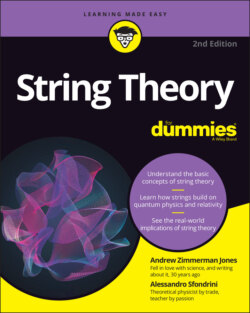Читать книгу String Theory For Dummies - Andrew Zimmerman Jones - Страница 74
The rule of simplicity
ОглавлениеIn science, one goal is to propose the fewest “entities” or rules needed to explain how something works. In many ways, the history of science is seen as a progression of simplifying the complex array of natural laws into fewer and fewer fundamental laws.
Take Occam’s razor, which is a principle developed in the 14th century by Franciscan friar and logician William of Occam. His “law of parsimony” is basically translated (from Latin) as “Entities must not be multiplied beyond necessity.” (In other words, keep it simple.) Albert Einstein famously stated a similar rule as “Make everything as simple as possible, but not simpler.” Though not a scientific law itself, Occam’s razor tends to guide how scientists formulate their theories.
In some ways, string theory seems to violate Occam’s razor. For example, in order to be related back to the real world, string theory requires the addition of a lot of odd components that scientists haven’t actually observed yet (extra dimensions, new particles, and other features mentioned in Chapters 10 and 11). However, if these components are indeed necessary, then string theory is in accord with Occam’s razor.
